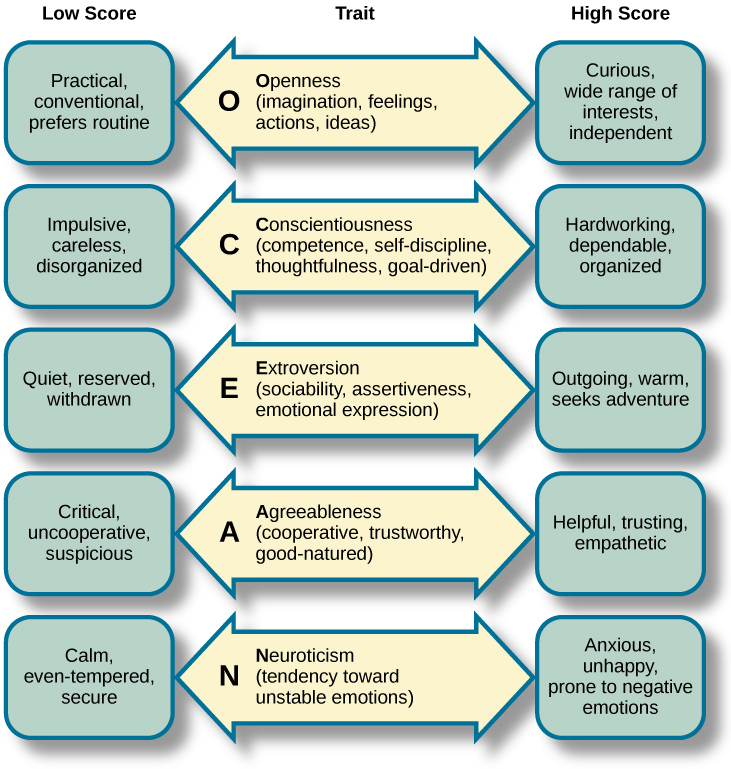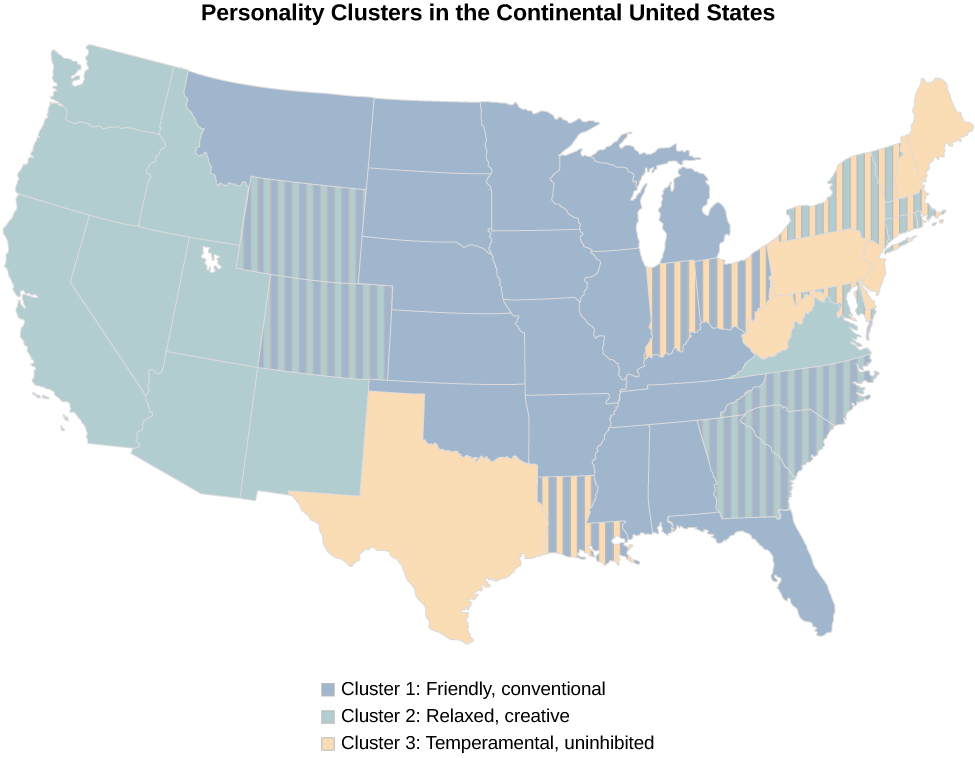We have learned that culture is transmitted to people through language, as well as through social norms which establish acceptable and unacceptable behaviors which are then rewarded or punished (Henrich, 2016; Triandis & Suh, 2002). With an increased understanding of cultural learning, psychologists have become interested in the role of culture in understanding personality.

The idea that personality can be described and explained by five traits has important implications, as does the fact that most personality tests were constructed and initially tested in Western countries (e.g., method validation from Chapter 3). Western ideas about personality may not apply to other cultures (Benet-Martinez & Oishi, 2008).
There are two main cultural approaches for researching personality.
- Etic traits are considered universal constructs that are evident across cultures and represent a biological bases of human personality. If the Big Five are universal then they should appear across all cultures (McCrae and Allik, 2002).
- Emic traits are constructs unique to each culture and are determined by local customs, thoughts, beliefs, and characteristics. If personality traits are unique to individual cultures then different traits should appear in different cultures.
Cross cultural research of personality uses an etic framework and researchers must ensure equivalence of the personality test through validation testing. The instrument must include equivalence in meaning, as well as demonstrate validity and reliability (Matsumoto & Luang, 2013). For example, the phrase feeling blue is used to describe sadness in Westernized cultures but does not translate to other languages. Differences in personality across cultures could be due to real cultural differences, but they could also be consequences of poor translations, biased sampling, or differences in response styles across cultures (Schmitt, Allik, McCrae, & Benet-Martínez, 2007).
Most of the cross-cultural research on FFM and Big Five has been done using the NEO-PI (and its subsequent revisions) which has demonstrated equivalence, reliability and validity across several cross-cultural studies (Costa & McCrae, 1987; McCrae, Costa & Martin, 2005). Research using the NEO-PI found support for the entire Five-Factor Model in Chinese, Dutch, Italian, Hungarian, German, Australian, South African, Canadian, Finnish, Polish, Portuguese, Israeli, Korean, Japanese, and Filipino samples, in addition to other samples (McCrae, Costa, Del Pilar, Rolland, & Parker, 1998).
Rentfrow, Kosinski, Stillwell, Gosling, Jokela and Potter (2013) identified regional personality differences within the United States using the Big Five personality dimensions. The researchers analyzed responses from over 1.5 million individuals found that there are three distinct regional personality clusters:

Cluster 1 is in the Upper Midwest and Deep South and is dominated by people who fall into the friendly and conventional personality which is defined by moderately high levels of Extraversion, Agreeableness, and Conscientiousness, moderately low Neuroticism, and very low Openness. The cluster has predominantly White residents with comparatively low levels of education, wealth, economic innovation, and social tolerance but are civically engaged in their communities.
Cluster 2 includes the West and is dominated by people who are more relaxed, emotionally stable, calm, and creative which is defined as low Extraversion and Agreeableness, very low Neuroticism, and very high Openness. There are disproportionate numbers of non-White residents in this region, in addition to people who are wealthy, educated, and economically innovative.
Cluster 3 includes the Northeast which has more people who are stressed, irritable, and depressed. The personality profile shows low Extraversion, very low Agreeableness and Conscientiousness, very high Neuroticism, and moderately high Openness. There are disproportionate numbers of older adults and women in this region, in addition to affluent and college-educated individuals.
One explanation for the regional differences is selective migration (Rentfrow et al., 2013). Selective migration is the concept that people choose to move to places that are compatible with their personalities and needs. For example, a person high on the agreeable scale would likely want to live near family and friends, and would choose to settle or remain in such an area. In contrast, someone high on openness would prefer to settle in a place that is recognized as diverse and innovative (such as California).
Personality tests rely on self-report which is susceptible to response bias like socially desirability responding. To evaluate this possibility, McCrae and colleagues (2005) recruited students from 50 cultural groups and modified the NEO-PI to be in the third person (i.e., he, she, his, her). The research participants were asked to complete the form on someone else that they knew very well (McCrae et al., 2005). The same five factors emerged in this study. These results provided empirical support for the FFM and for the use of self-report instruments when conducting cross-cultural personality research. Think about it – there was no reason for the students to respond in a desirable way because they were answering questions about someone else.

